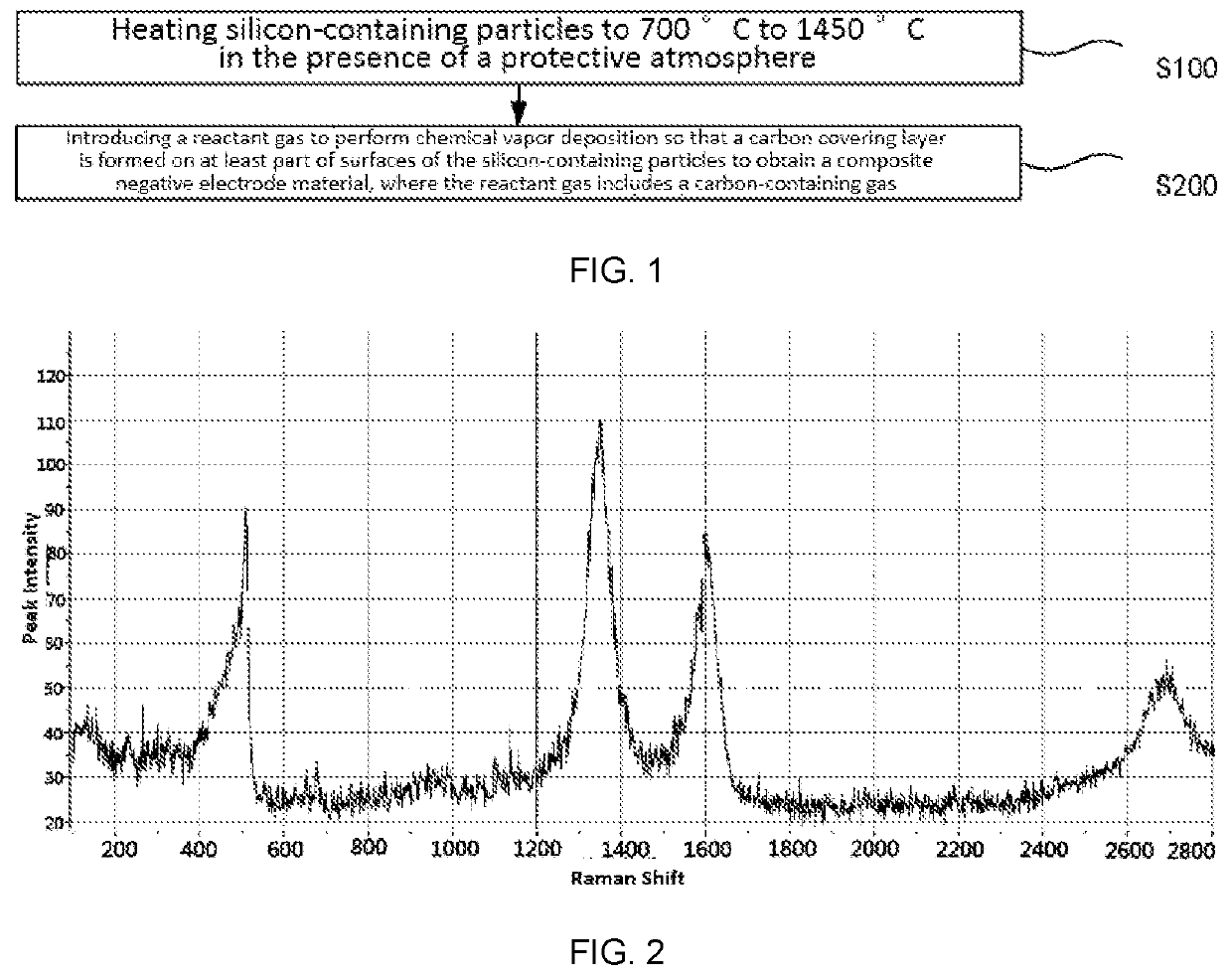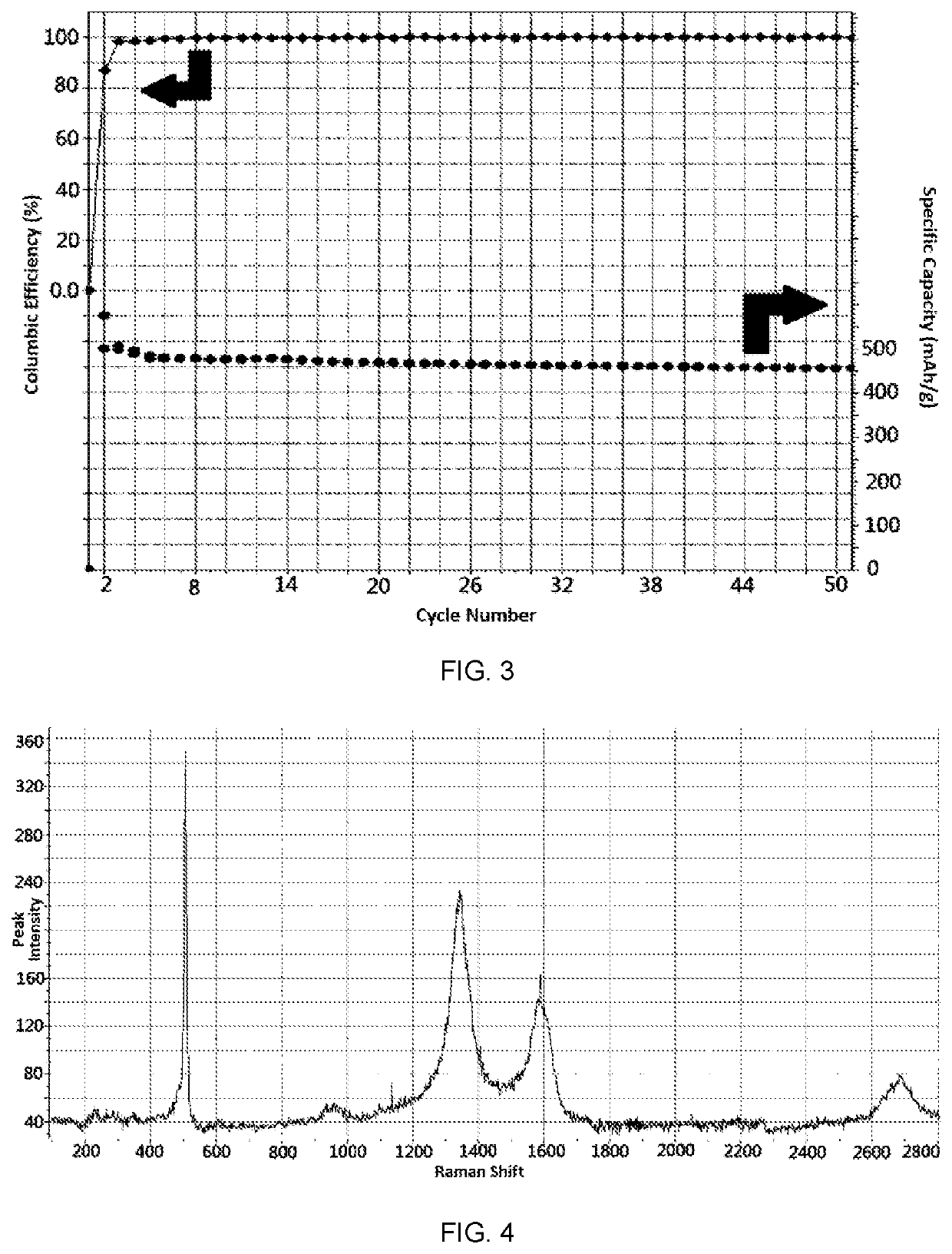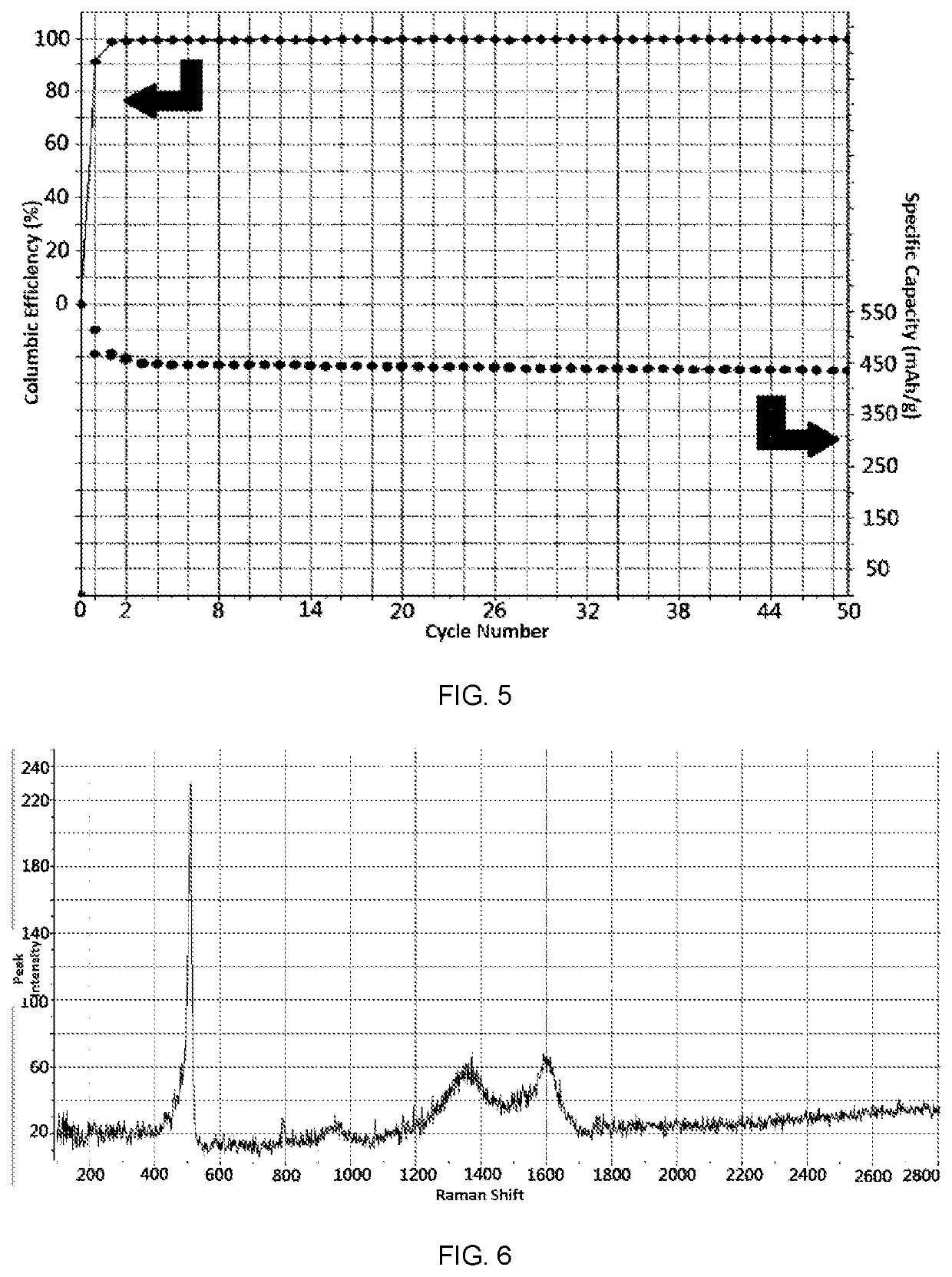Composite negative electrode material and preparation method therefor and lithium battery
a negative electrode material and composite technology, applied in the field of battery materials, can solve the problems cycle performance of the negative electrode material, and achieve the effects of improving the rate capability, improving the conductivity of the product, and improving the stability of the solid-liquid interfa
- Summary
- Abstract
- Description
- Claims
- Application Information
AI Technical Summary
Benefits of technology
Problems solved by technology
Method used
Image
Examples
example 1
[0111]In this example, the composite negative electrode material was prepared according to the following method:
[0112]1.5 kg of SiO powder was taken and added to a 5 L experimental batch-type rotary CVD furnace, and nitrogen was introduced into the furnace for atmosphere replacement. After the oxygen content in the discharged gas was less than 200 ppm, the temperature was raised while continuously introducing nitrogen. After the temperature was raised to 900° C., methane was introduced at a rate of 0.8 L / min using nitrogen as a carrier gas, and the reaction pressure was maintained at 1.2 atm. After a continuously 6-hour reaction, the methane gas was cut off, and the resulting product was naturally cooled down to obtain the composite negative electrode material.
[0113]The negative electrode material was output and then broken up and sieved and subjected to Raman spectroscopy testing (an XPLORA laser confocal Raman spectrometer manufactured by HORIBA (Japan) was used, with a laser wave...
example 2
[0118]In this example, the composite negative electrode material was prepared according to the following method:
[0119]150 g of porous silicon powder (with a specific surface area greater than 150 cm2 / g) was taken and added to a 5L experimental batch-type rotary CVD furnace, and nitrogen was introduced into the furnace for atmosphere replacement. After the oxygen content in the discharged gas was less than 200 ppm, the temperature was raised while continuously introducing nitrogen. After the temperature was raised to 935° C., methane was introduced at a rate of 1.0 L / min using nitrogen as a carrier gas, and the reaction pressure was maintained at 2.0 atm. After a continuously 10-hour reaction, the methane gas was cut off, and the resulting product was naturally cooled down to obtain the composite negative electrode material.
[0120]The negative electrode material was output and then broken up and sieved, and tested.
[0121]The negative electrode material prepared in this example includes...
example 3
[0125]1.5 kg of SiO powder was taken and added to a 5 L experimental batch-type rotary CVD furnace, and nitrogen was introduced into the furnace for atmosphere replacement. After the oxygen content in the discharged gas was less than 200 ppm, the temperature was raised while continuously introducing nitrogen. After the temperature was raised to 700° C., a gas mixture of acetylene and hydrogen (in a molar ratio of acetylene to hydrogen of 2:1) was introduced at a rate of 1.8 L / min using nitrogen as a carrier gas, and the reaction pressure was maintained at 1.0 atm. After a continuously 16-hour reaction, the gas mixture was cut off, and the resulting product was naturally cooled down to obtain the composite negative electrode material.
[0126]The negative electrode material prepared in this example includes a SiO core and an inorganic carbon material covering layer covering the surface of the SiO core, wherein the mass fraction of the carbon covering layer is 4.3%. The Raman spectrum of...
PUM
| Property | Measurement | Unit |
|---|---|---|
| particle size | aaaaa | aaaaa |
| specific surface area | aaaaa | aaaaa |
| thickness | aaaaa | aaaaa |
Abstract
Description
Claims
Application Information
 Login to View More
Login to View More - R&D
- Intellectual Property
- Life Sciences
- Materials
- Tech Scout
- Unparalleled Data Quality
- Higher Quality Content
- 60% Fewer Hallucinations
Browse by: Latest US Patents, China's latest patents, Technical Efficacy Thesaurus, Application Domain, Technology Topic, Popular Technical Reports.
© 2025 PatSnap. All rights reserved.Legal|Privacy policy|Modern Slavery Act Transparency Statement|Sitemap|About US| Contact US: help@patsnap.com



